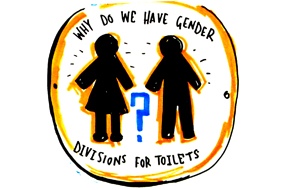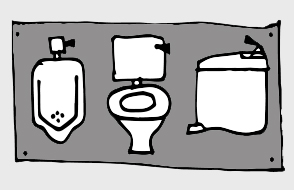For many people the availability of toilets is fundamental to accessing to the city centre. While these spaces are under threat, the social role of public toilets needs to be reevaluated.

City Centre Toilets

Ensure that there is enough space for people to access the toilet

It is important to provide enough space for wheelchair users to get in and out of the toilet. Ensure that door widths are big enough for all wheelchair types. In addition, there needs to be space within the toilet for wheelchair users to park and get out of their wheelchair.
Public toilets should be signposted effectively in urban spaces

Public toilets play a central role in supporting different people's access to towns and cities. They should be well signposted within town and city centres, with signs that indicate how far they are away so that people can judge whether or not they can get to them in time.
Clustering toilets in multiple sites

Clustering toilets in the same place can be a helpful way of making toilets easy to find. Consider more than one cluster of toilets positioned near heavily used areas with prominent signage to direct people to them. When toilets are hard to find many people cannot access them when they need them.
Think about when toilets should be open to the public

In the early stages of the design process it is important to think about the times when toilets will be open in order to maximise use. If toilets will be open through the night, it is necessary to think about the design implications.
Radar locks have pros and cons

While radar locks support the privacy of disabled people, many disabled people don't own a radar key. Such locks can limit the accessibility of toilet spaces for some people.
Consider the requirements of people with visual impairments

The use of tactile symbols and or audio descriptions of toilet layouts allow people with visual impairments to be able to identify which toilet best represents their requirements and navigate the space inside.





